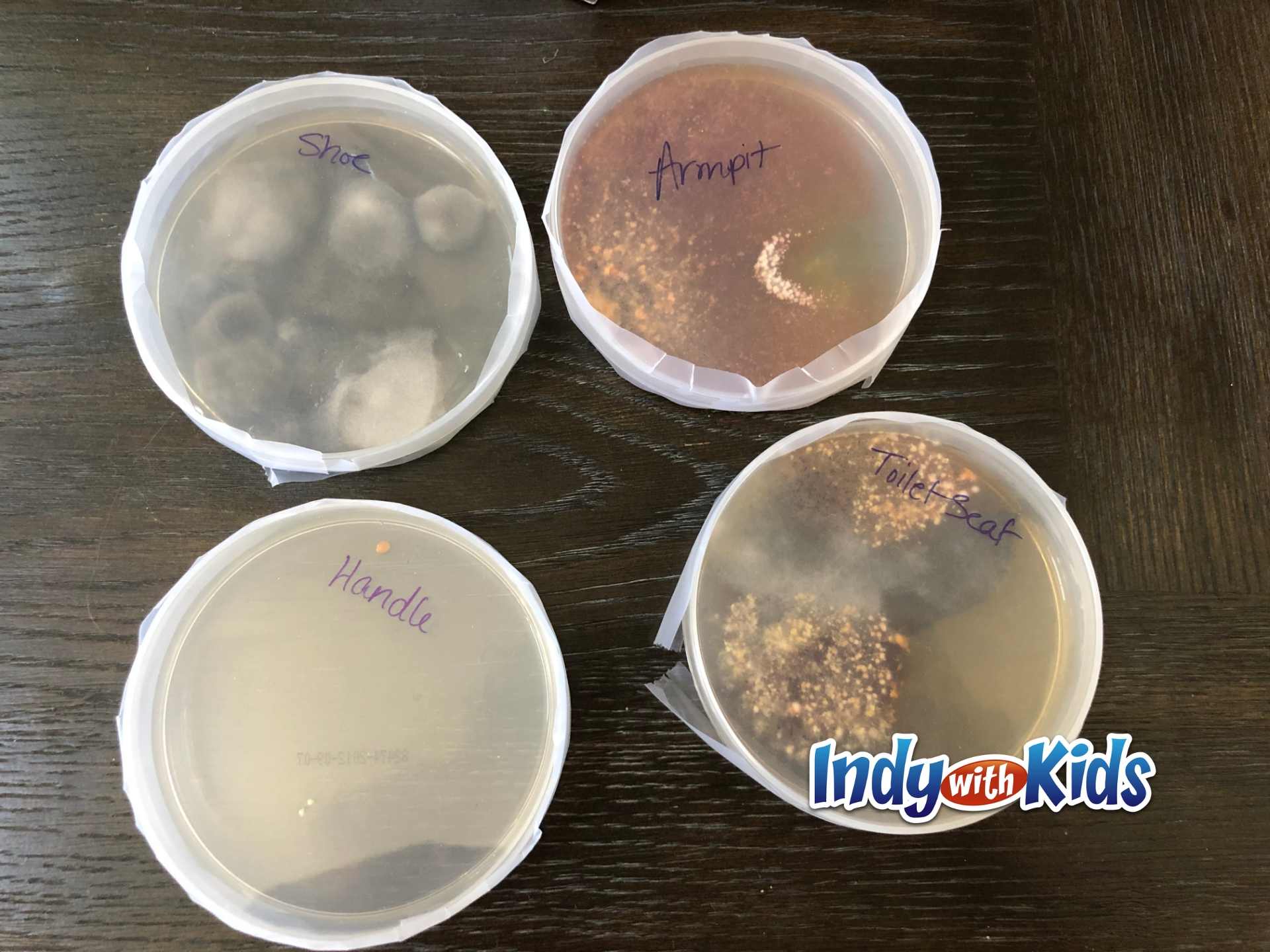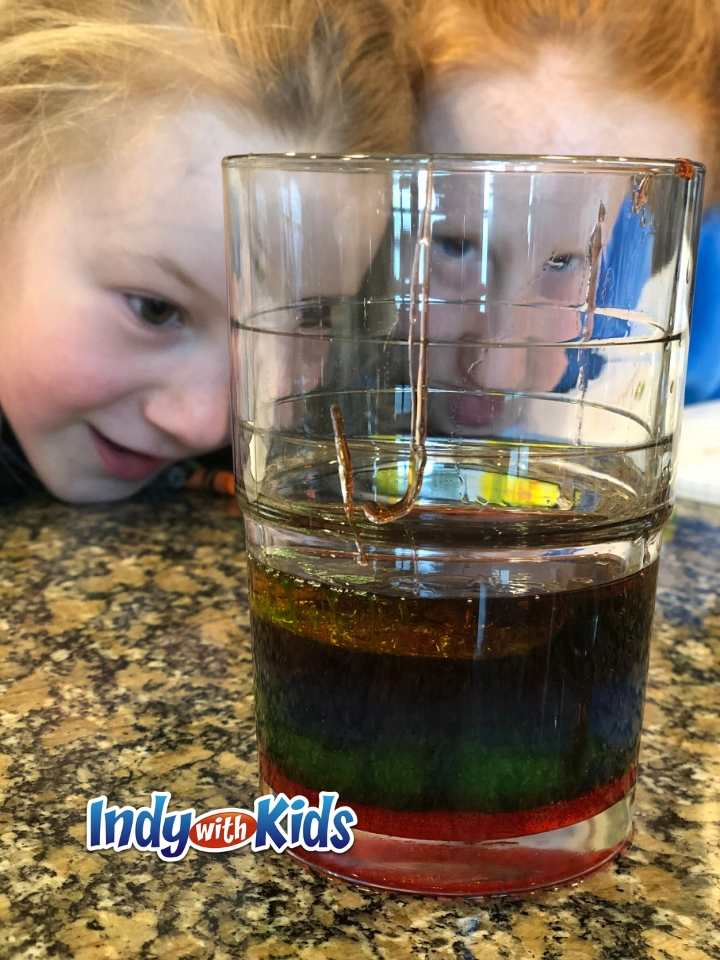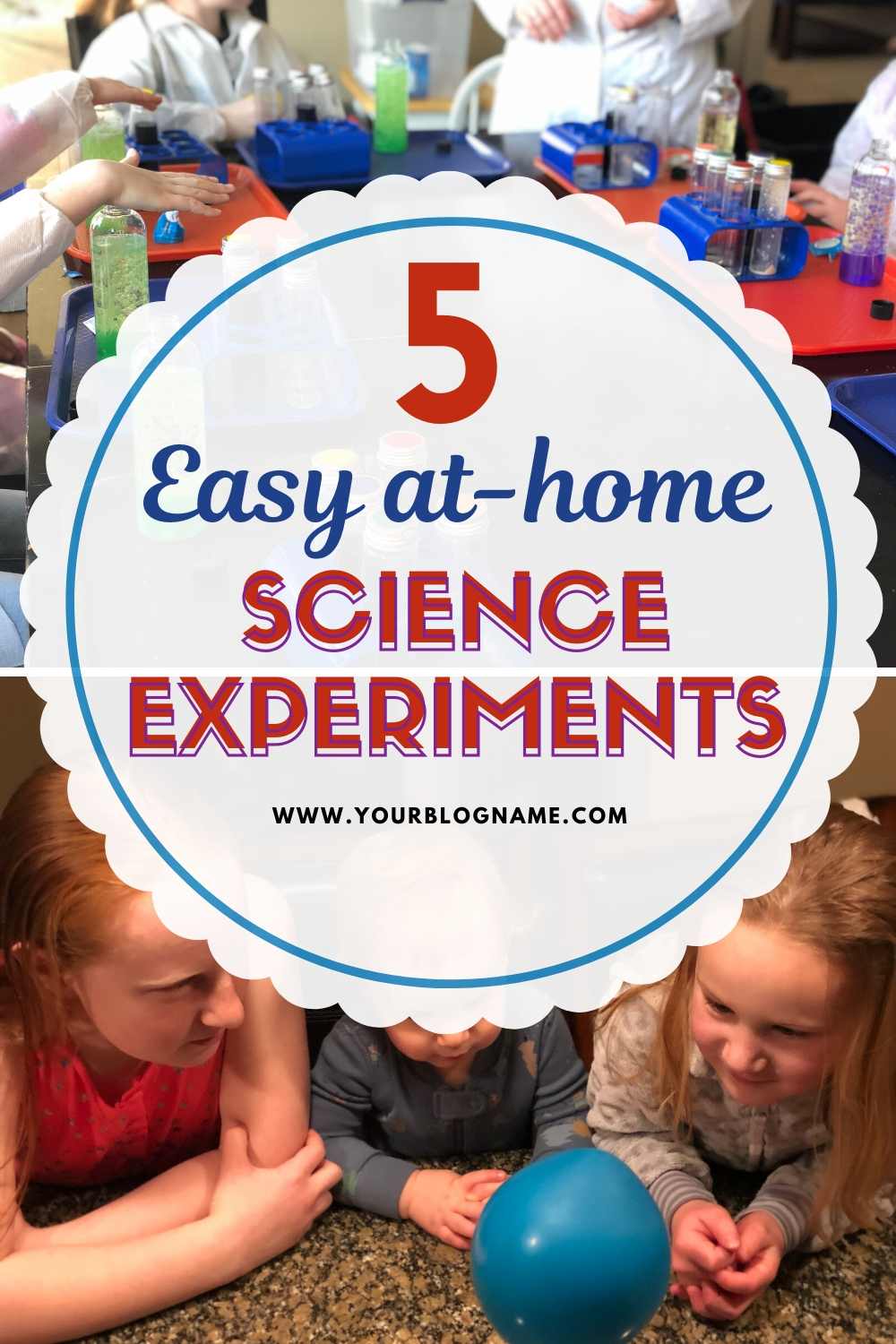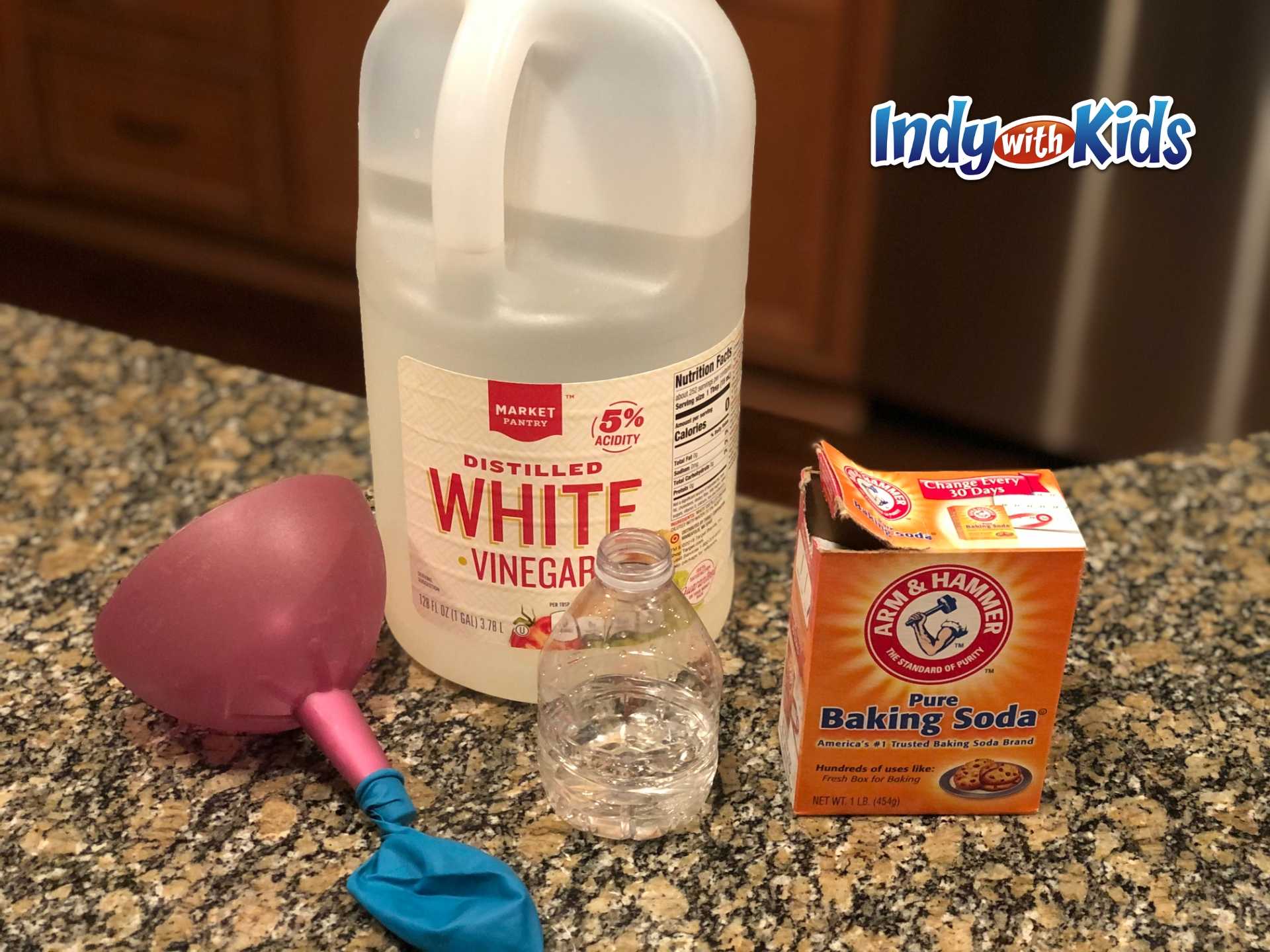Five Easy At-Home Science Experiments Your Kids will Love
The kids have finished their elearning, played on iPads, gone outside, at present are looking at you for something to do…plow to science! Here are 5 experiments you tin can do with all ages using ingredients already in your home.
Why Should Y'all Wash Your Hands?
 We've done this experiment in our abode with a science kit that included agar and petri dishes, simply you can likewise but use a loaf of staff of life and some ziplock baggies!
We've done this experiment in our abode with a science kit that included agar and petri dishes, simply you can likewise but use a loaf of staff of life and some ziplock baggies!
Take one slice of breadstuff out of the loaf and immediately put it in a baggie. This will be the control used to compare. Take another slice out and accept 1 of your kids rub their hands all over it (before washing) and put it in a baggie. Another piece can be rubbed past hands washed with soap and then sealed in a baggie. Another slice can be rubbed past easily cleaned with manus sanitizer. Cheque bags every day and take the kids describe their observations.
Variations: My kids loved seeing how much bacteria and fungi grew from things effectually the house, so they tested the bottoms of their shoes, the toilet seat, and the sink handles. Be artistic!
Science Connection: Take your kids investigate microorganisms and the differences between them.
Rainbow Liquids
This experiment is perfect for St. Patrick's Day!
 Assemble a articulate, tall jar or glass, food coloring, and the following liquids: dear, corn syrup, dish soap, water, vegetable or olive oil, and rubbing alcohol. Slowly pour a layer of honey into the jar, being sure to merely pour in the center and not touch the sides. Then, you may desire to add together a fiddling food coloring to the corn syrup and slowly pour a layer into the jar, not touching the sides. Color your dish lather next, and then slowly cascade it in, not touching the sides. The side by side layers are a piddling tricker because yous need to pour them super slow and let them cascade down the side, so mayhap use a baster, harbinger, or pipette. Color some h2o and add together a layer slowly down the side of your jar. Finally, color your oil and slowly add it down the side of the jar followed by the rubbing alcohol.
Assemble a articulate, tall jar or glass, food coloring, and the following liquids: dear, corn syrup, dish soap, water, vegetable or olive oil, and rubbing alcohol. Slowly pour a layer of honey into the jar, being sure to merely pour in the center and not touch the sides. Then, you may desire to add together a fiddling food coloring to the corn syrup and slowly pour a layer into the jar, not touching the sides. Color your dish lather next, and then slowly cascade it in, not touching the sides. The side by side layers are a piddling tricker because yous need to pour them super slow and let them cascade down the side, so mayhap use a baster, harbinger, or pipette. Color some h2o and add together a layer slowly down the side of your jar. Finally, color your oil and slowly add it down the side of the jar followed by the rubbing alcohol.
Variations: Gather some pocket-size objects, such as a newspaper prune, penny, chocolate bit, or a push pin. Drib them in the jar and see where they stop.
Science Connection: Have your kids investigate density. Older kids could even investigate the exact density number of each of the liquids.
Does Sunscreen Work?
 Practice your kids often run from you when it'southward time for sunscreen? Testify them its importance with this simple experiment!
Practice your kids often run from you when it'southward time for sunscreen? Testify them its importance with this simple experiment!
All you need are some nighttime pieces of structure paper and sunscreen. Fold the paper in half. Label one side "sunscreen" and the other side "
no sunscreen." Put a thin layer of sunscreen on your child's palms (spray might be all-time) and accept them brand a handprint on the "sunscreen" side. Put the paper out in the dominicus and bank check it in an hour, then in some other hr. Accept the kids record their observations.
Variations: Use different sunscreens or unlike SPFs to test if ane seems to protect amend than some other. Go along them out for a few days or longer to come across what happens over time.
Science Connection: Have your kids enquiry UVA and UVB and what makes sunscreen piece of work. Why do they need to reapply?
Inflate a Balloon with a Chemic Reaction
 Baking soda and vinegar are the ingredients for the classic volcano eruption experiment. In this twist, though, you'll use the ingredients to blow upward a balloon.
Baking soda and vinegar are the ingredients for the classic volcano eruption experiment. In this twist, though, you'll use the ingredients to blow upward a balloon.
Simply add vinegar to the bottom of an empty h2o bottle until information technology's nigh ⅓ full (using a funnel makes the process much easier!). Put 2-three tablespoons of baking soda into a balloon. Adhere the balloon to the water bottle without letting the blistering soda drop into the vinegar. When ready, lift the airship and watch what happens.
Variations: Endeavor different amounts of vinegar and baking soda to see if your airship inflates more or less.
Science Connection: Have your kids research the chemical reaction of blistering soda and vinegar. What gas is filling the balloon to make it inflate (not helium!)?
Balloon Rocket
Get together a long piece of cord, a harbinger, record, and a balloon. Put the straw on the cord and tie the string between two surfaces, such as a chair and doorknob. The longer the string, the better! Blow up the airship but don't tie it. Keep the airship horizontal to the floor and attach it to the straw using tape. When set up, move the straw all the way to i cease of the string, and then release the balloon.
Variations: Make a balloon rocket for each child and have races! Does the size of the balloon make a deviation? Tin you attach boxes or other objects to the straw and go them from one end of the string to the other?
Science Connection: Take your kids investigate Newton's Third Law—for every activity, there is an equal and opposite reaction.
bradfordhatessuce.blogspot.com
Source: https://indywithkids.com/easy-science-experiments/